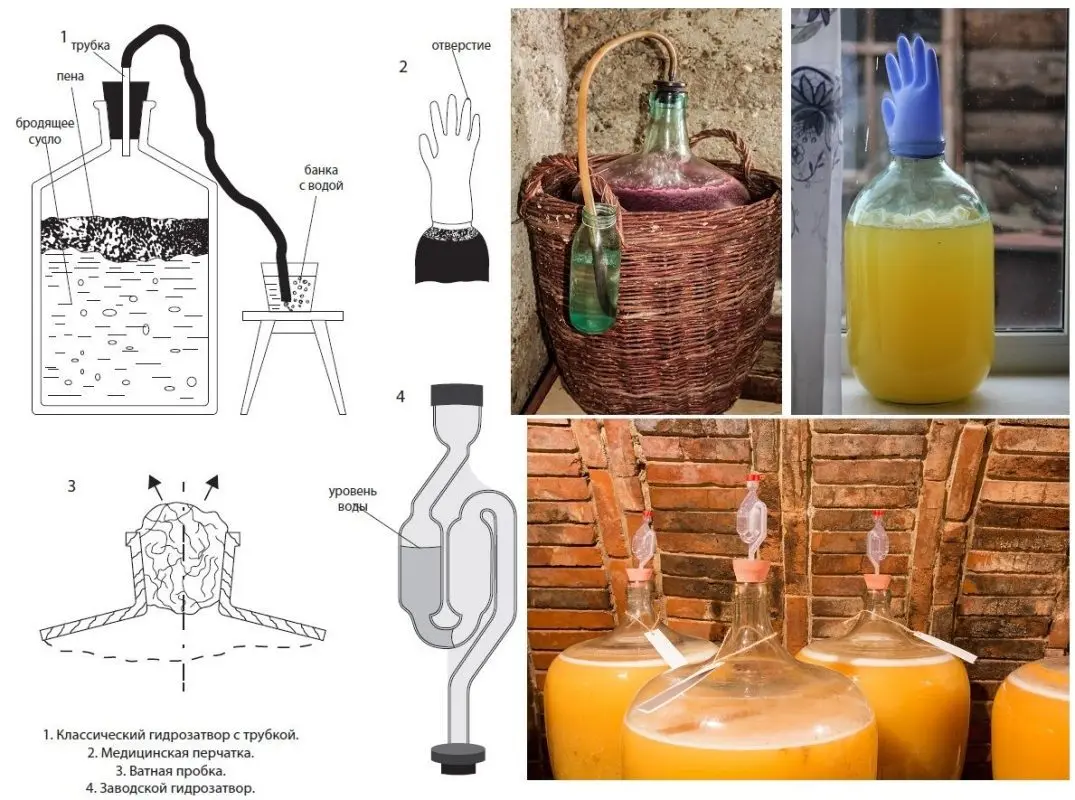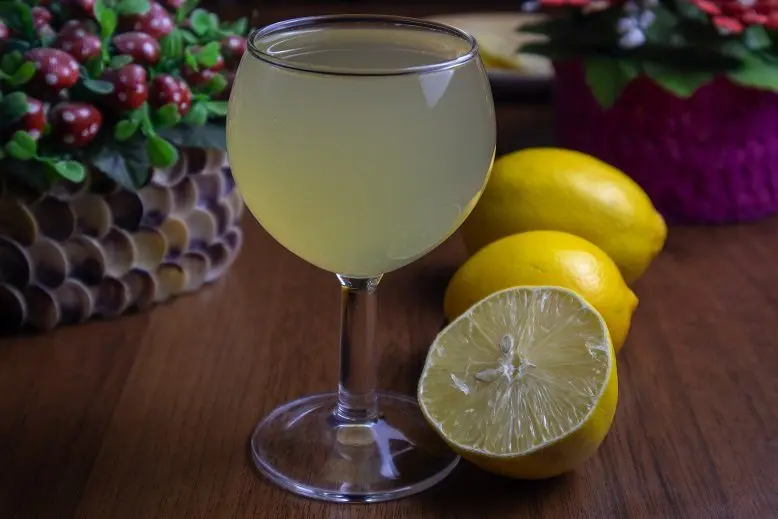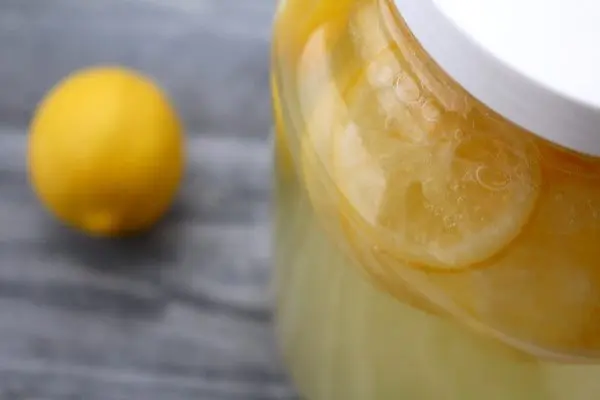Contents
Homemade lemon wine is remembered for its citrus aroma, slightly tart taste with ascorbic acidity and yellowish color. Sweetness can be adjusted to your liking. The cooking technology has several features that must be observed – if you just ferment lemon juice, the wine will turn out bitter and sour.
Lemons without blackened skin and mold are required. The more fragrant and juicy the fruit, the better. On average, one lemon contains 30-40 ml of juice. If you use a juicer to squeeze out, you can get up to 60 ml.
To start fermentation, it is better to take wine yeast (preferably for white grapes), but sourdough from raisins or other berries is also suitable.
lemon wine recipe
Ingredients:
- lemon juice – 500 ml (about 14-16 medium lemons);
- water – 500 ml;
- sugar – 300 g and to taste for sweetness;
- sourdough or wine yeast – for 2 liters of must.
Preparation
1. Pour lemons with hot water, wait 5 minutes, then rinse in warm running water and wipe dry with a clean, dry cloth. This is necessary to remove the preservative from the surface, which is used to treat fruits for long-term storage. The preservative interferes with fermentation, makes the wine oily, impairs the taste and aroma of the drink, so it must be removed.
2. With a knife or vegetable peeler, remove the zest from each lemon – the yellow part of the peel without the white pulp that gives bitterness. Squeeze out the juice from the peeled fruits with your hands or a juicer.
3. Mix lemon juice and water in a saucepan (in equal proportions), add 150 g of sugar. Bring the mixture to a boil over medium heat, boil for 2-3 minutes, removing the foam, then remove from the stove. Boiling destroys part of the ascorbic and citric acids, as a result, the wine will not be as “ascorbic” and taste softer.
4. Add lemon zest, stir and cover. Cool mixture to room temperature.
5. Add yeast (pre-diluted according to the instructions on the bag) or sourdough. Stir, cover the neck of the pot with gauze so that insects do not get into the wort, and leave in a dark place at a temperature of + 18-25 ° C for 3 days. Stir every 8-12 hours with a clean hand or a wooden stick, drowning the floating zest in the juice so that the wine does not sour. After a maximum of a day, signs of fermentation should appear: hissing, foam on the surface and a characteristic sour smell.
Attention! You can add yeast or sourdough only after the mixture has cooled to +30 ° C and below, otherwise fermentation will not start.
6. After 3 days, strain the fermenting wort through cheesecloth, squeeze the zest to dryness (no longer needed).
7. Add 75 g of sugar to the liquid part and stir until it is completely dissolved.
8. Pour the wort into a fermentation tank. Fill to a maximum of 75% of the volume to leave room for another serving of sugar, foam and carbon dioxide.
9. Close with a water seal of any design (you can install a medical glove with a hole pierced by a needle in one of the fingers).

10. Transfer wine from lemons to a dark room with a stable temperature of +18-25 °C.
11. After 10 days, add the remaining sugar (75 g). To do this, pour 150 ml of fermenting wort into another container, dissolve sugar in it and pour the resulting syrup back, then reinstall the water seal.
Fermentation of wine from lemons lasts 40-50 days. The process ended when the water lock stopped letting gas (the glove deflated), sediment appeared at the bottom, and the wine became noticeably lighter.
Attention! If fermentation does not stop after 55 days from the date of installation of the water seal, the wine should be drained from the sediment through a straw and fermented again (under the lock or glove) under the same temperature conditions.
12. Pour the fermented young lemon through a tube into another container, trying not to touch the sediment at the bottom. Sweeten with sugar to taste, separately you can fix with alcohol or vodka in an amount of 2-15% of the volume. Fortified wine keeps better, but is tougher.
13. Pour the drink into holding containers, taking care to fill to the neck to minimize contact with oxygen. Close hermetically. If sugar was added at the previous stage, keep it under a water seal for the first 7-10 days in case of repeated fermentation.
14. Transfer wine from lemons for aging to a refrigerator or cellar with a temperature of +2-16 °C. Leave for at least 5 months (preferably 6-8). When a precipitate of 2-3 cm appears, filter by pouring through a straw.
15. The drink is ready, if the sediment does not appear for a couple of months, then the wine can be bottled for storage and tightly closed.

If stored in a cellar or refrigerator, the shelf life of homemade lemon wine is up to 2 years. Fortress – 9-13% vol.










